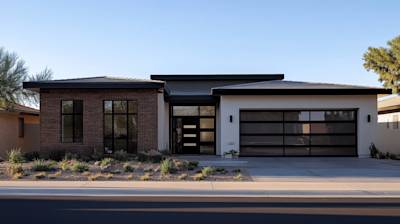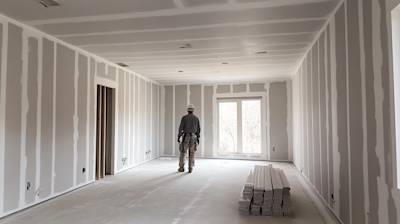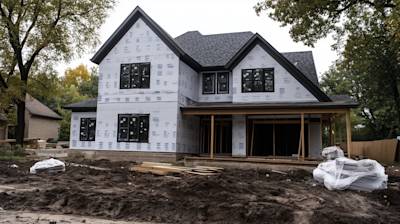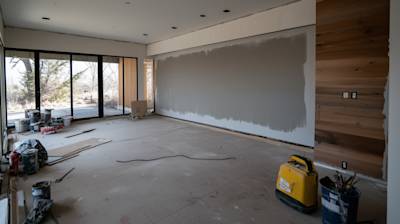Signs Your Stucco Needs Repair
Stucco is a popular exterior finish for homes in Sacramento, providing a durable and aesthetically pleasing surface. However, like any building material, stucco is not immune to wear and tear, and over time, it may develop various issues that require prompt attention. Regular stucco inspection is essential to catch these problems early on and prevent them from escalating into more extensive damage. In this article, we will explore the importance of routine stucco inspections and guide homeowners on how to identify common stucco issues that might necessitate repair.
Importance of Regular Stucco Inspection
Regular stucco inspection is crucial for maintaining the integrity and longevity of your home's exterior. By conducting routine assessments, you can identify potential problems early and address them before they worsen. Here are some reasons why regular stucco inspection is vital:
- Prevent Costly Repairs: Identifying and fixing small stucco issues promptly can prevent them from escalating into more significant and expensive problems down the line.
- Protect Home Value: Well-maintained stucco enhances the curb appeal and value of your property, making it more attractive to potential buyers if you ever decide to sell.
- Avoid Structural Damage: Damaged stucco can allow moisture to penetrate the underlying structure, leading to rot, mold growth, and potential structural damage.
- Ensure Energy Efficiency: Cracks and gaps in stucco can compromise your home's energy efficiency by allowing drafts to enter and conditioned air to escape.
Visual Inspection Tips
Homeowners can perform a visual inspection of their stucco to spot signs of damage early on. Here's a step-by-step guide on how to conduct a visual inspection:
- Start with a Walkaround: Begin your inspection by walking around the entire exterior of your home to examine the stucco surface closely.
- Look for Cracks: Check for cracks in the stucco, both small hairline cracks and wider fissures. Pay special attention to areas around windows, doors, and corners.
- Check for Discoloration: Look for any areas with discoloration, as this might indicate water intrusion or other underlying issues.
- Spot Efflorescence: Efflorescence appears as a white, chalky residue on the stucco surface and is caused by water-soluble salts. It's a sign of moisture penetration.
- Inspect for Mold and Mildew: Check for any signs of mold or mildew growth on the stucco surface, especially in shaded and damp areas.
Mold and Mildew Growth
Mold and mildew thrive in moist environments, and damaged stucco can provide an ideal breeding ground for these unwanted visitors. Identifying mold and mildew growth is crucial to prevent potential health hazards and further stucco deterioration. Signs of mold and mildew infestation include:
- Black or green spots on the stucco surface.
- A musty odor near the affected area.
- Increased allergies or respiratory issues among household members.
If you suspect mold or mildew growth on your stucco, it's essential to address the problem promptly. A Sacramento stucco repair company, such as Atlas Stucco, can help you safely remove the mold and repair the damaged stucco.
Water Stains and Discoloration
Water stains and discoloration on your stucco can indicate water leaks and improper drainage. It's essential to differentiate between normal wear and water-related damage. Here's how:
- Water Stains: Water stains often appear as dark patches on the stucco surface and might indicate leaks from above, such as a roof leak.
- Discoloration: Discoloration on stucco can be caused by various factors, including dirt, algae, or mineral deposits. However, if the discoloration is localized and appears in irregular patterns, it could be a sign of water intrusion.
If you notice water stains or discoloration on your stucco, it's essential to find the source of the water and repair the stucco to prevent further damage.
Stucco Cracks
Stucco cracks are a common issue and can be caused by several factors, such as settling of the foundation, temperature fluctuations, or improper application. Understanding the different types of stucco cracks can help you assess their severity:
- Hairline Cracks: These are very fine cracks that are typically less than 1/16th of an inch wide. While they are common and usually not a cause for concern, they can allow moisture to penetrate the stucco and should be monitored.
- Wider Fissures: Cracks wider than 1/16th of an inch might indicate more significant structural issues and should be evaluated by a professional stucco repair contractor.
- Vertical Cracks: Vertical cracks can be a sign of settlement issues or stress on the wall and may require immediate attention.
If you notice any significant or widening cracks on your stucco, it's best to contact a Sacramento stucco repair expert to assess the situation and recommend appropriate repairs.
Bulging or Blistering Stucco
Bulging or blistering stucco can be caused by trapped moisture within the stucco or improper installation techniques. These issues can compromise the structural integrity of the stucco and lead to more severe problems. Signs of bulging or blistering stucco include:
- Visible swelling or distortion on the stucco surface.
- Bubbles or blisters in the stucco.
- Soft or spongy areas when pressed.
If you notice any of these signs, it's essential to address the issue promptly to prevent further damage. An expert stucco repair contractor can determine the cause of the bulging or blistering and perform the necessary repairs.
Efflorescence
Efflorescence is a crystalline deposit that appears on the surface of stucco when water-soluble salts leach out and evaporate. It can give the stucco a white, powdery appearance. Efflorescence is usually a sign of water intrusion behind the stucco and should not be ignored. Steps to deal with efflorescence include:
- Identify the source of water intrusion and fix the problem to prevent further salt buildup.
- Clean the affected area using appropriate cleaning solutions to remove the efflorescence.
- Apply a water repellent sealer to the stucco surface to help prevent future efflorescence and water penetration.
Loose or Chipped Stucco
Loose or chipped stucco can occur due to impact damage, age-related wear, or poor installation. It's essential to address loose or chipped stucco promptly, as it can lead to more significant problems if left unattended. Here's what to do if you encounter loose or chipped stucco:
- Secure Loose Stucco: If you notice any areas of stucco that are loose or detached from the wall, gently tap the surrounding area to see if more stucco comes loose. Use a hammer and masonry nails to reattach the loose stucco to the substrate.
- Fill Chipped Areas: For small chipped areas, use a stucco patching compound to fill in the gaps. Smooth the patch with a trowel to match the surrounding texture.
- Seek Professional Repairs: If the damage is extensive or beyond your DIY abilities, it's best to contact a professional stucco repair contractor like Atlas Stucco for a thorough assessment and proper repairs.
Stucco Separation
Stucco separation occurs when the stucco pulls away from the underlying materials, such as the sheathing or lath. This can happen due to poor installation, water damage, or movement of the building's structure. Signs of stucco separation include visible gaps between the stucco and other building materials. Here's what to do if you suspect stucco separation:
- Assess the Extent: Carefully inspect the separated areas to determine the extent of the problem. If the separation is minimal, it might be a cosmetic issue. However, if it's widespread, it could indicate a more severe problem.
- Address Water Damage: If water damage is the cause of stucco separation, fix the source of the water intrusion to prevent further damage and mold growth.
- Secure Loose Stucco: For minor separations, you can try reattaching the stucco to the underlying materials using masonry nails and adhesive. For significant separations, consult a professional stucco repair contractor for appropriate repairs.
Stucco Holes and Pitting
Stucco holes and pitting can occur due to a variety of factors, including impact damage, water damage, or poor stucco application. These issues can compromise the stucco's ability to protect the underlying structure and should be addressed promptly. Here's what to do if you encounter stucco holes and pitting:
- Fill Holes: Small holes can be filled with stucco patching compound. Use a trowel to apply the compound and smooth it to match the surrounding texture.
- Repair Pitting: Pitting can be more challenging to repair, as it involves filling multiple small indentations in the stucco surface. Consider seeking professional assistance to ensure a seamless repair.
- Prevent Water Intrusion: Address any water damage that might have caused the holes or pitting to prevent further damage and maintain the stucco's integrity.
Temperature and Weather Effects
Sacramento's climate, with its hot, dry summers and occasional heavy rains, can impact the performance of stucco. Extreme weather conditions can cause stucco to expand and contract, leading to cracks and other issues over time. Here are some weather-related effects on stucco:
- Cracking: Temperature fluctuations can cause stucco to expand in the heat and contract in the cold, leading to cracks.
- Color Fading: Prolonged exposure to the sun's UV rays can cause the color of stucco to fade over time.
- Moisture Damage: Heavy rains and improper drainage can lead to water intrusion, causing various stucco problems, including efflorescence and mold growth.
To protect your stucco from weather-related issues, consider applying a weather-resistant coating or paint and ensuring proper drainage around your home.
Identifying Water Intrusion
Water intrusion can cause extensive damage to stucco and the underlying structure. It's essential to differentiate between water-related issues and other stucco problems. Here are some tips to identify water intrusion:
- Water Stains: Look for dark, discolored patches on the stucco surface, especially near windows and doors.
- Efflorescence: The presence of white, chalky residue on the stucco surface indicates water-soluble salts and potential water intrusion.
- Soft or Spongy Areas: Press on the stucco surface to check for any soft or spongy areas, which might indicate trapped moisture.
- Musty Odor: A musty smell inside your home could suggest water intrusion and mold growth behind the stucco.
DIY vs. Professional Assessment
While homeowners can perform visual inspections and address minor stucco issues themselves, some problems require professional expertise. Here's when to opt for a DIY inspection and when to seek a professional stucco repair contractor:
- DIY Inspection: You can perform a visual inspection and address minor cracks, chipped areas, and efflorescence on your own.
- Professional Assessment: If you notice significant cracks, bulging stucco, water stains, or suspect water intrusion, it's best to consult an expert stucco repair contractor for a comprehensive evaluation.
The Dangers of Ignoring Stucco Problems
Ignoring stucco issues can lead to severe consequences for your home's integrity and your wallet. Here are the dangers of neglecting stucco problems:
- Structural Damage: Stucco problems, if left unaddressed, can allow water to penetrate the underlying structure, leading to rot, mold growth, and compromised structural integrity.
- Increased Repair Costs: Small stucco issues are relatively easy and affordable to fix. However, neglecting them can result in more extensive damage, leading to higher repair costs.
- Reduced Home Value: Damaged stucco can detract from your home's curb appeal and lower its overall value.
Seeking Professional Assistance
When it comes to stucco issues, it's essential to take action promptly. If you notice any concerning signs or are unsure about the severity of the problems, don't hesitate to seek help from experienced stucco repair contractors like Atlas Stucco. A professional assessment can identify hidden issues and ensure proper repairs, protecting your home and preserving its beauty for years to come.
In conclusion, regular stucco inspection is crucial for maintaining the beauty and integrity of your Sacramento home's exterior. By being proactive and identifying signs of
Tags: Signs Your Stucco Needs Repair,








